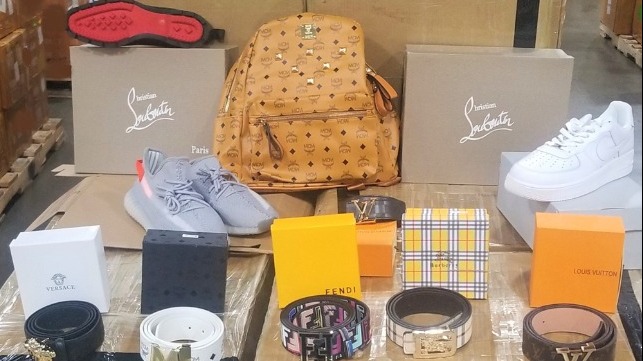Report Calls for Steps Reducing Ships as Primary Route of Counterfeits

A new report from the Organisation for Economic Co-operation and Development (OECD) highlights the growing role that shipping, and specifically containers, is playing in counterfeit merchandise transported and sold around the world. OECD is calling for ports as well as the shipping companies and manufacturers to take more steps to combat the threat to trade and consumers.
Using data regarding the seizure of counterfeit goods obtained from the World Customs Organization, the European Commission, and U.S. Customs, along with databases on shipping, the OECD reports that more than half of the total value of counterfeit goods seized around the world are shipped by sea. Containerships the report says carried 56 percent of the total value of seized counterfeits, which was estimated at more than $500 billion in 2016, or more than three percent of global trade.
The OECD report, entitled the Misuse of Containerized Maritime Shipping in the Global Trade of Counterfeits, finds that the faked and pirated products are being shipped by virtually every means of transport. In terms of the number of seizures, the trafficking of fakes via small parcels is growing and becoming a significant problem in terms of enforcement, but in terms of value, counterfeits transported by containership dominate. They conclude that smugglers are finding it appealing given the ease and low risk of stowing counterfeit products as well as narcotics and other types of contraband.
The highest number of counterfeit shipments they report originated in South East Asia, including China and Hong Kong, India, Malaysia, Thailand, and Singapore, while Mexico, Turkey, and the United Arab Emirates also remain among the top economies for counterfeit and pirated goods traded worldwide. Additional analysis showed that over half of containers transported by ships from economies known to be major sources of counterfeits entered the European Union through Germany, the Netherlands, and the United Kingdom. There are also some EU countries, such as Bulgaria, Croatia, Greece, and Romania, with relatively low volumes of containers trade, but with a high level of imports from counterfeiting-intense economies, according to the report.
Among the most frequently seized products found from sea shipments were perfumes and cosmetics where 82 percent of the seized value was discovered in shipping containers. They also cited overwhelming percentages of the value of counterfeit footwear, foodstuff, toys and games being shipped in containers as well as the trade in tobacco and wildlife products.
The analysis concludes that the illicit trade in counterfeits has not been a high priority for enforcement, as shipments of counterfeits are commonly perceived as “commercial trade infractions” rather than criminal activity. Consequently, existing enforcement efforts may not be adequately tailored to respond to this risk, according to the report.
Although progress has been made, criminal elements have been quick to adapt to changing circumstances, finding new ways to elude detection and restriction of their illegal activities. Risk assessment has been an important tool for customers the OECD says, but physical checks remained the most effective method of interception.
“Seaports should up their game and improve their capability for effective scrutiny of cargo,” they write in the report. Given the very high labor intensity of physical checks, the OCED calls for improving risk assessment techniques and improving the quantity and reliability of information. Application of modern technologies with a view towards the use of electronic manifests would facilitate risk assessment, which relies critically on data quality and detailed information to be successful the report concludes. They are calling for improved use of declarations of intent, in which well-known brand owners, vessels operators, and freight forwarders work together to develop a voluntary guidelines, which aim to raise awareness of the importance of gathering sufficient information on the parties using shipping services.
Maritime transport companies could use their pivotal role in supply chains to better scrutinize their cargo. The OCED calls for commitments to move cargo only for clients that comply with certification schemes, saying the processes currently in use for natural forests, palm oil, timber, and paper supply chains, could help to develop similar systems to counter illicit trade in counterfeits misusing containerized maritime transport.
